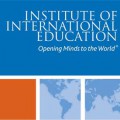 America continues to be a major destination of choice for international students seeking higher educational opportunities aboard. The country’s colleges and universities played host to an estimated 900,000 international students during the 2013-14 academic year, an 8% increase over the previous year.
America continues to be a major destination of choice for international students seeking higher educational opportunities aboard. The country’s colleges and universities played host to an estimated 900,000 international students during the 2013-14 academic year, an 8% increase over the previous year.
The data comes from the 2014 Open Doors Report on International Educational Exchange recently released by the Institute on International Education and the U.S. Department of State’s Bureau of Education and Cultural Affairs.
Conducted annually, the report delves into America’s international student population, countries of origin, fields of study, schools of choice and other related trends.
Where Students Come From
While the largest segment of America’s international student population continues to come from China, this year’s study shows an increase in the diversity of countries of origin.
Here are the top five countries of origin and the percentage of the international student population they represent, according to the report:
- China, 31%
- India, 11.6%
- South Korea, 7.7%
- Saudi Arabia, 6.1%
- Canada, 3.2%
Other leading countries of origin include Taiwan, Japan, Vietnam, Mexico and Brazil.
Fields of Choice
International students come to the United States to study a variety of fields, ranging from the arts to social sciences.
Here are the top five fields of study and the percentage of the international student population pursuing those fields:
- Business and management, 21.1%
- Engineering, 19.2%
- Math and computer science, 10.3%
- Social sciences, 8.2%
- Physical and life sciences, 8%
Schools of Choice
Although America’s international student population is distributed among all states and many different colleges and universities, some schools draw a larger percentage of students.
Here is a look at the five top schools international students are choosing across the country and the total number of students from other countries enrolled during the 2013-14 academic year:
- New York University, 11,164
- University of Southern California, 10,932
- University of Illinois – Urbana-Champaign, 10,843
- Columbia University, 10,486
- Purdue University, 9,988
International student exchange programs that enable students from America to study abroad and those from other countries to come to the United States are considered vital for international relations, experts say.
The report also indicates the practice is beneficial to the economy. International students contributed an estimated $27 billion to the American economy last year, an increase of $3 billion over the previous year.
While there were once concerns that the events of Sept. 11, 2001, might slow the growth of international student populations in the United States, the ongoing studies have proven the fear unfounded. The growth of the international student population over the last 15 years is about 72%.
The numbers of exchanges have grown on both sides, Peggy Blumenthal of the Institute of International Education pointed out, adding that this turn of events is beneficial for all involved.
“In today’s very complicated world, it’s educational exchange that is the hope that we can find ways to work together,” she said.





